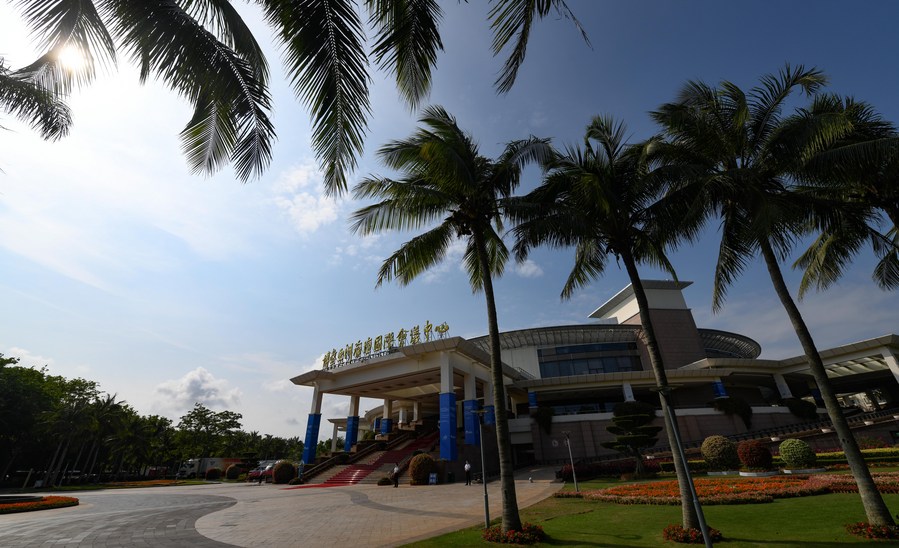Belt and Road gains momentum in challenging times
Entering its eighth year of solid progress, the Belt and Road Initiative (BRI) is injecting growing impetus and stability into global cooperation in a world of uncertainties.
Entering its eighth year of solid progress, the Belt and Road Initiative (BRI) is injecting growing impetus and stability into global cooperation in a world of uncertainties.

Photo taken on April 17, 2021 shows the Boao Forum for Asia (BFA) International Conference Center in Boao, south China's Hainan Province. (Xinhua/Yang Guanyu)
Just days ago at the Boao Forum for Asia annual conference, Chinese President Xi Jinping likened the BRI to "a public road open to all" rather than "a private path owned by one single party." His use of this analogy indicates that China, as the initiator of the BRI, endeavors to share opportunities with the rest of the world.
Faced with the unprecedented challenges of COVID-19, rising unilateralism and increasing protectionism, the world requires closer ties among all nations. Against this backdrop, the BRI is particularly valuable for cementing connectivity, bridging differences and advancing global cooperation.
Facts speak louder than words. Bucking a global COVID-19-driven downturn, China's non-financial direct investment into countries along the Belt and Road jumped 18.3 percent year on year to 17.8 billion U.S. dollars in 2020.
Trade is also thriving along the ancient but exuberant pathway, which has helped transport valuable medical supplies to those in urgent need amid COVID-19.
In the first quarter of this year, the China-Europe freight train services recorded 3,398 journeys, surging 75 percent year on year. A total of 89,000 tonnes of anti-pandemic supplies had been transported across continents via the services by late March.
China is also working with all willing participants to build the BRI into a pathway to poverty alleviation and growth. According to a report from the World Bank, Belt and Road projects could by 2030 help lift 7.6 million people out of extreme poverty and 32 million people out of moderate poverty across the world.
As of the end of January, a total of 171 countries and international organizations have signed 205 cooperation agreements with China on the joint construction of the Belt and Road.
With more partners jumping on board for a mutually beneficial journey, there is more to expect in the future: Countries can work together to fight COVID-19, economic slowdowns, poverty, climate change and other common challenges, regardless of geographical or ideological boundaries.

